Getting the Most from This Book
Daily life is filled with decisions large and small that affect our environment. From the food we eat, to the cars we drive or choose not to drive, to the chemicals we put into the water, soil, and air. The impact of human activity is wide-
The purpose of this book is to give you a working knowledge of the big ideas of environmental science and help you to prepare for the AP® Environmental Science Exam. The book is designed to provide you with a strong foundation in the scientific fundamentals, to introduce you to the policy issues and conflicts that emerge in the real world, and to offer you an in-
Like the first edition, Friedland and Relyea Environmental Science for AP®, Second Edition, is organized to closely follow the AP® environmental science course description. Every item on the College Board’s “Topic Outline” is covered thoroughly in the text. Go to the College Board's Topic Outline section for a detailed alignment guide. The textbook offers comprehensive coverage of all required AP® course topics and will help you prepare for success on the exam by:
providing chapter opening case studies that will help you to see how environmental science is grounded in your daily life and in the world around you
dividing each chapter into manageable modules that will help you to be organized and keep up with the challenging pace of the AP® environmental science course
using the same terminology, language, and formulas that you will see on the AP® environmental science exam
using expertly selected and artistically rendered figures, photographs, graphs, and visuals that will help you to understand and remember the big ideas and important concepts that will be on the exam
providing you with many opportunities to practice for the exam throughout the year, including end-
of- module AP® review questions, chapter AP® practice exams, unit AP® practice exams, and a cumulative AP® practice exam at the end
The next few pages offer you a brief tour of the features of this book that have been designed to help you succeed in the course and on the exam.
Explore the world around you through science.
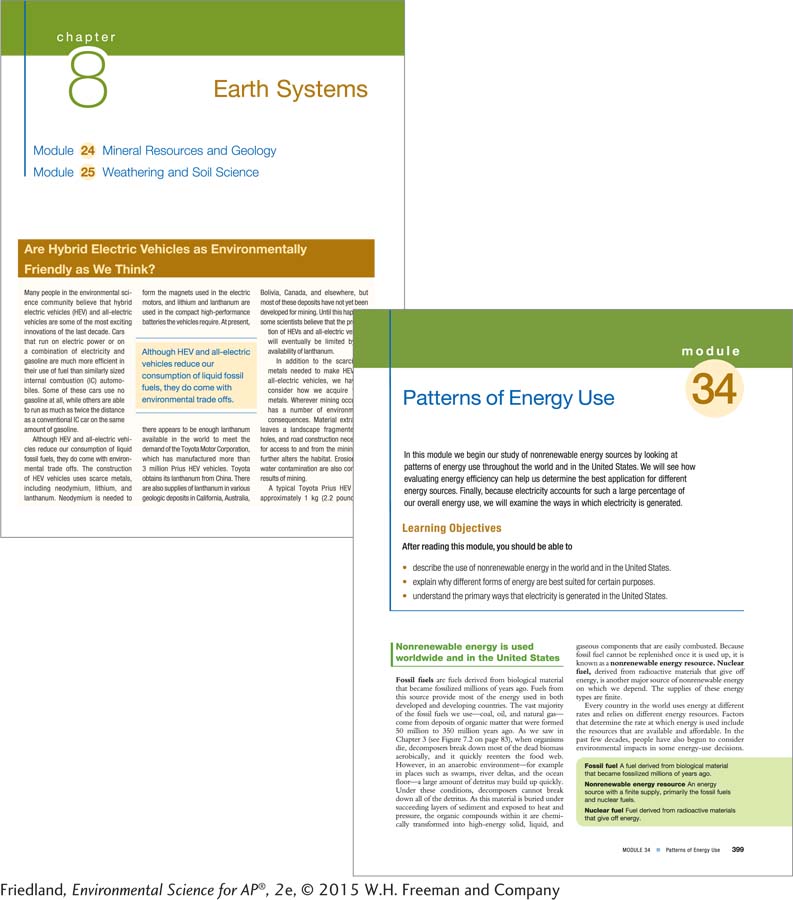
Chapter Opening Case Study
Read the intriguing case study that begins each chapter and think about the environmental challenges and trade-
As you can see from case studies like this one from Chapter 8, it’s not always easy to make sustainable choices.
Module Structure
Chapters are divided into short Modules to help keep you on pace. Each module opens with a brief description of what topics will be covered.
Learning Objectives
A list key ideas at the beginning of the module help to keep you focused as you read.
Running glossary
Important key terms are set in bold type in the text and defined in a popup box when the term is clicked on.
Math practice makes perfect.
Do the Math
Among the biggest challenges on the AP® Environmental Science Exam are questions that ask you to solve environmental science math problems. “Do the Math” problems help you practice the math skills that you’ll need to tackle these problems on the exam.
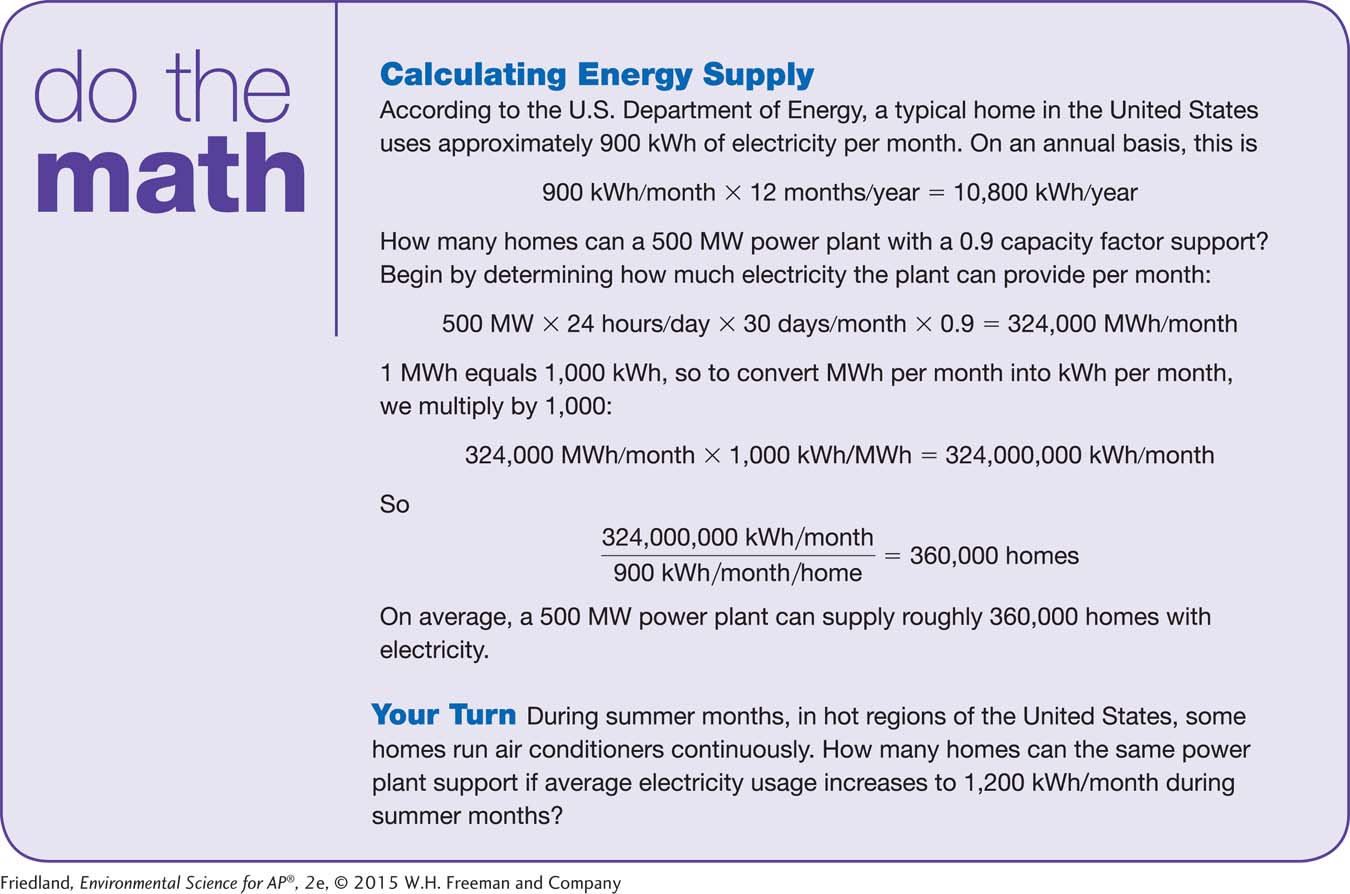
Your Turn
Each “Do the Math” box has a “Your Turn” practice problem to help you review and practice the math skills introduced.

Prepare for the Exam
Once you are comfortable with the math skills introduced, you’ll be prepared for quantitative problems on the exam.
Analyze and interpret visual data.
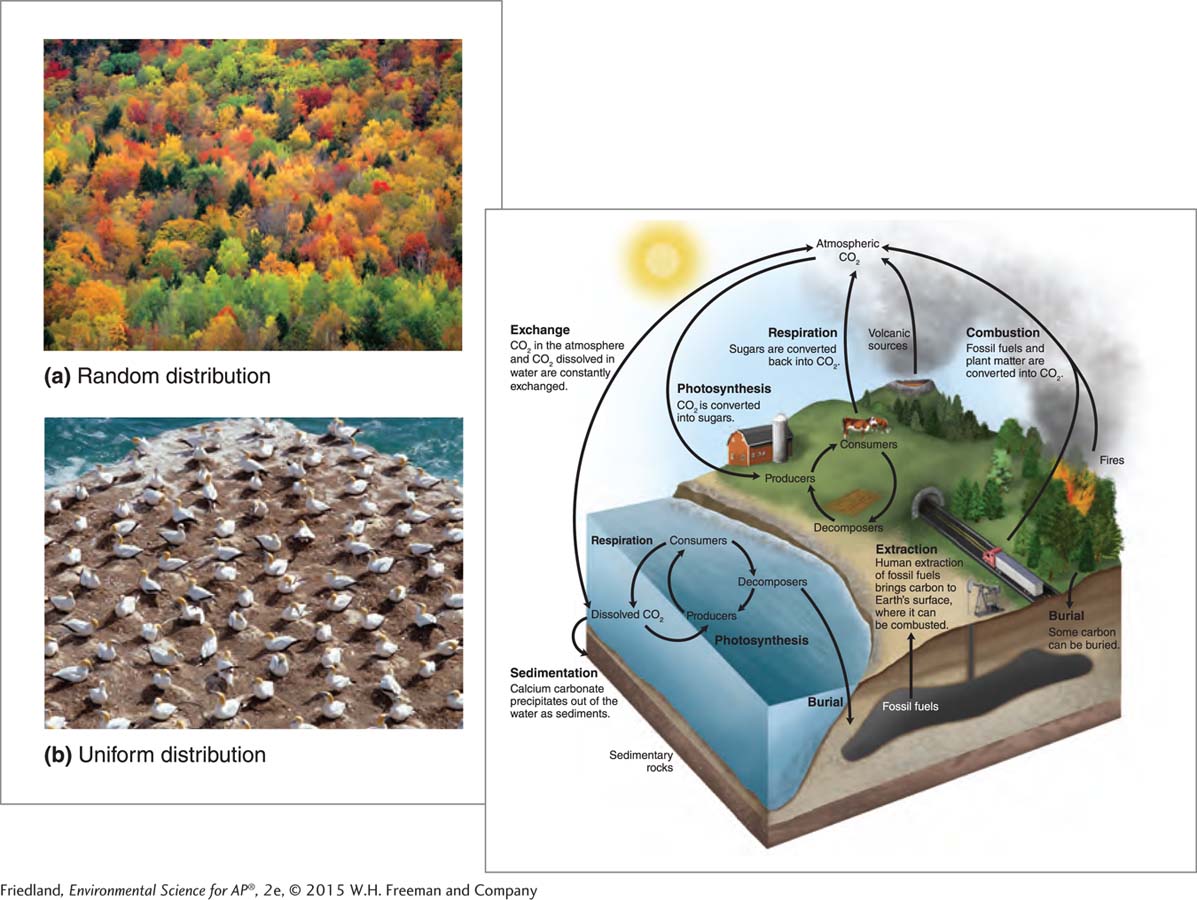
Photos and Illustrations
The photos and illustrations in this book are more than just pretty pictures. They have been carefully chosen and developed to help you comprehend and remember the key ideas.
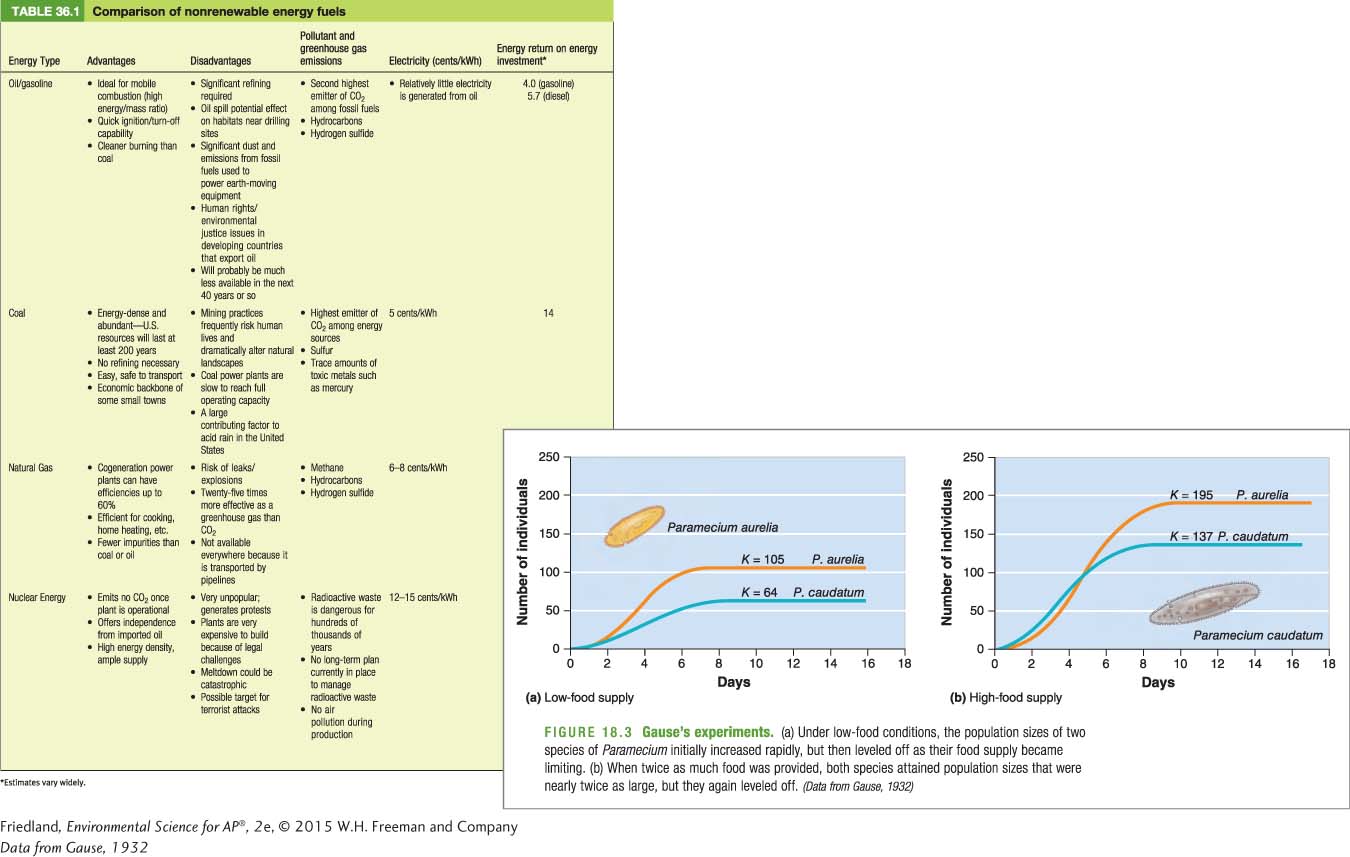
Tables and Graphs
To understand environmental science and succeed on the exam, you need to engage in the scientific practice of analyzing and interpreting a variety of tables, graphs, and charts.
Review and practice for quizzes and tests.

Module Review
Solidify your understanding by reviewing the main ideas in each module review.
Exam Prep All Year
Each module ends with multiple-
Chapter Review
At the end of each chapter, take time to review the main ideas and key terms.
Learning Objectives Revisited
Check your notes against summaries of the learning objectives for each module in the chapter.
Prepare and practice for the AP® Environmental Science Exam.
Chapter AP® Environmental Science Practice Exam
When you finish a chapter take the practice exam to check your understanding of the main ideas. The practice exam will help you become familiar with the style of questions on he AP® Environmental Science Exam.
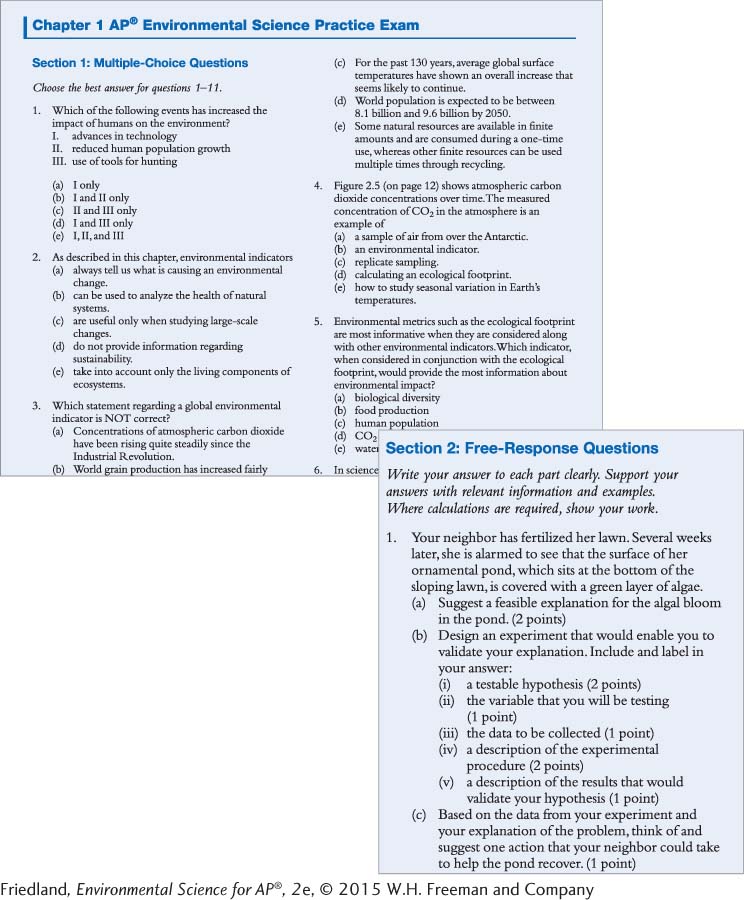
Multiple-Choice Questions
Each chapter exam begins with multiple-
Free-Response Questions
Chapter exams include two free-
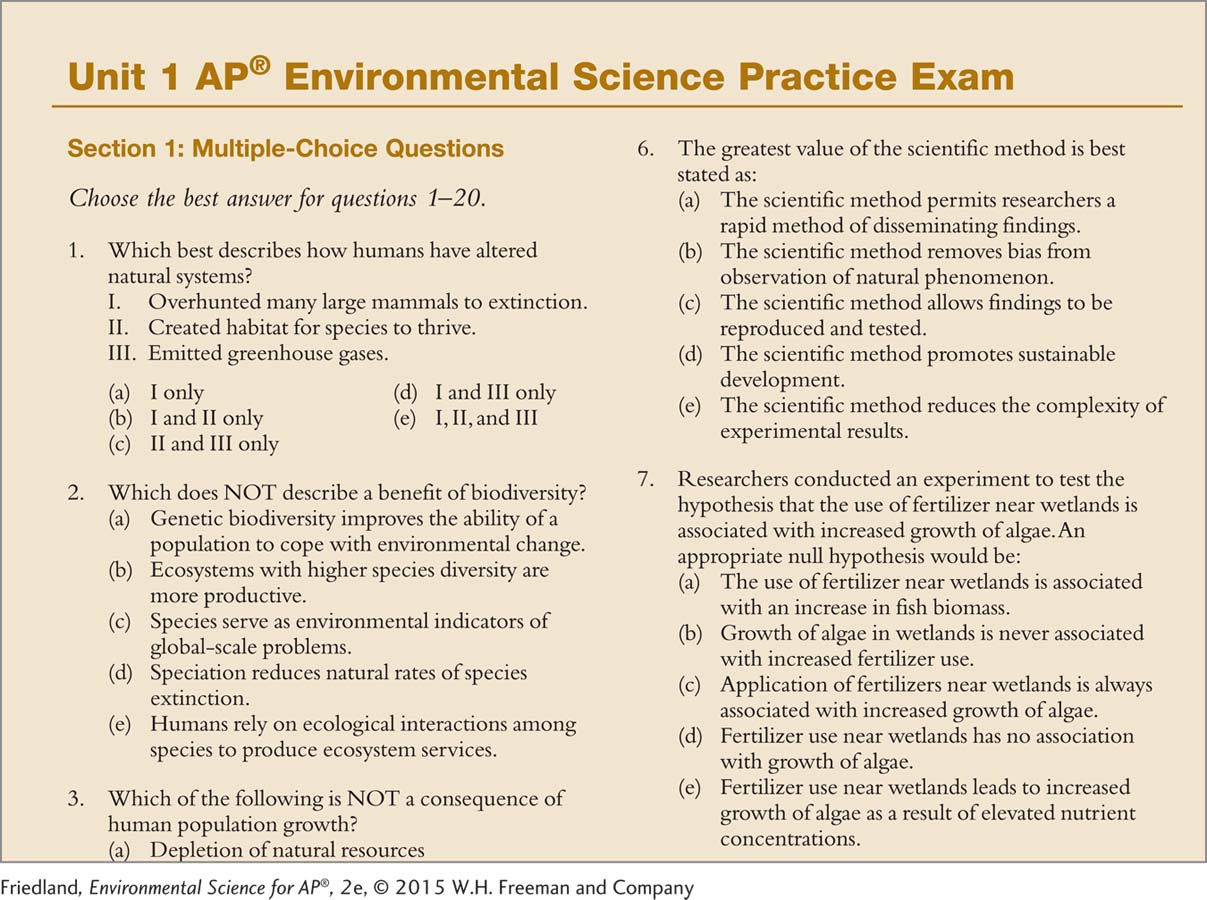
Unit AP® Environmental Science Practice Exam
The textbook is divided into 8 major units. At the end of each unit, you are provided with a longer practice exam containing 20 multiple-
Cumulative AP{sup}®{/sup} Environmental Science Practice Exam
At the end of the text you will find a cumulative exam with 100 multiple-

Be inspired by individuals making a difference.
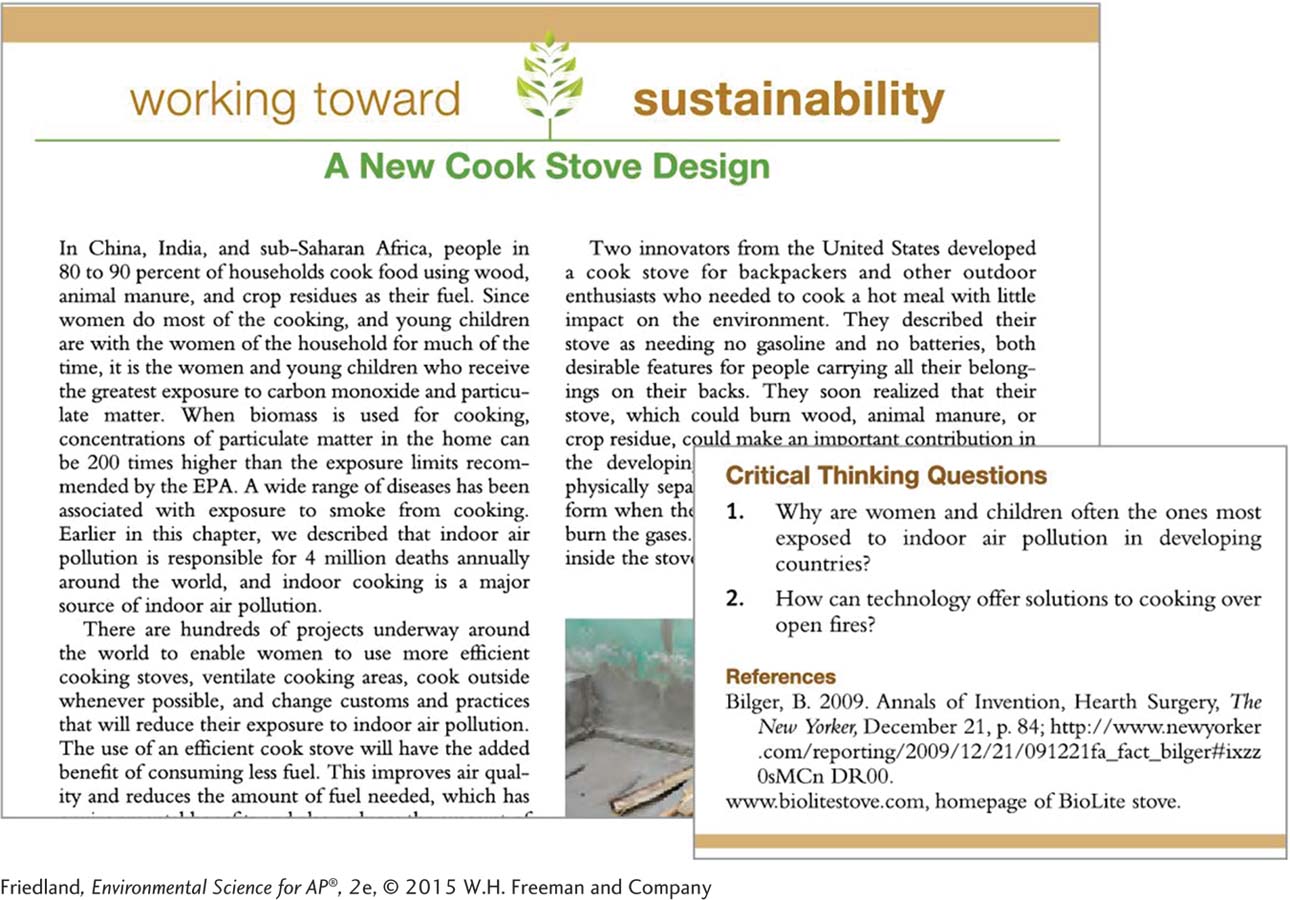
Working Toward Sustainability
At the end of each chapter read about people and organizations that are making a difference.
Critical Thinking Questions
Working Toward Sustainability provides questions that give you a chance to hone your critical thinking and writing skills.
Science in the real world

Science Applied
At the end of each unit, the “Science Applied” feature offers you an opportunity to read about how the science you are learning is used to make decisions about environmental issues.
Practice Free-Response Questions
Science Applied includes a free-
FRIEDLAND and RELYEA
Environmental Science for AP®
SECOND EDITION